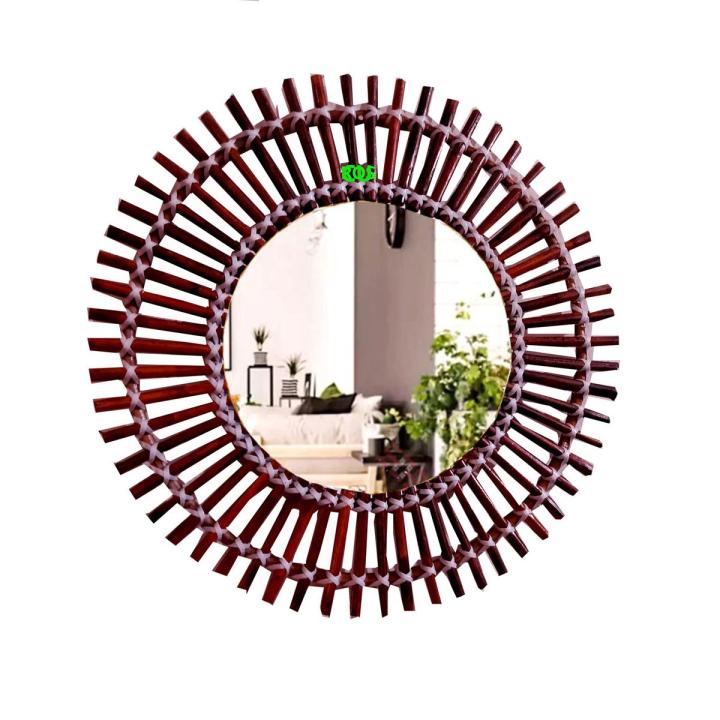mirror design

mirror design
- mirror design Whether used for architecture, home décor, or practical purposes, mirror designs are important for improving aesthetics and establishing
- a feeling of space. Mirrors are multipurpose objects with both decorative and practical uses.
- They can give the impression of depth, open up a space, and reflect light.
- The several facets of mirror design, such as material, shape, frame styles, and internal effects,
- will be examined in this review.
Practicality and Function
- Naturally, the main purpose of any mirror is to reflect light.
- Mirrors enable people to assess their look and are frequently an essential part of everyday routines,
- whether they are placed in corridors, living rooms, bedrooms, or bathrooms. In addition to serving as a tool for reflection,
- a well-designed mirror may significantly alter the atmosphere of a room.
- The ability of a mirror to enlarge areas is among its most significant practical advantages.
- Strategically placed mirrors can visually enlarge a space by giving the impression of depth.
- A huge mirror on one wall can provide the illusion of more open and airy space in small or narrow spaces.
- Mirror design has therefore become essential to interior design,
- particularly in homes and apartments where making the most of available space is crucial.
- Mirrors can also add brightness to a space.
- They improve a room’s overall illumination and give it a more lively feel by reflecting natural light.
- This effect, which creates a brighter and cozier ambiance without the need for more light sources, can be very useful in darkened places.
Visual Appeal and Frame Designs
- The frame is frequently the main attraction and can either blend in with or stand out from the surrounding décor.
- materials, and finishes.
Wooden Frames:
- These timeless frames come in a variety of styles, from modern to rustic.
- A worn wood frame is ideal for a rustic or vintage style, adding coziness and warmth. Conversely,
- a modern or minimalist space can benefit from the refinement and beauty that a sleek, polished wood frame can bring.
Metal Frames:
- Mirrors with metal frames are a fantastic choice for a more modern or industrial vibe.
- While a gold or silver metal frame adds a hint of glitz and elegance, a thin, matte black metal frame can produce a minimalist look. Additionally, the metallic sheen has the ability to reflect light, giving the design even more depth.
Decorative Frames:
- Mirrors that need a little drama are ideal for rooms with elaborate or elaborate frames. Decorative frames are frequently employed as focal points in a space, whether they are baroque-style mirrors with intricate carvings or contemporary mirrors with geometric patterns. To attract attention and establish the mood of the room, these kinds of mirrors can be positioned in foyers or living rooms.
Dimensions and Forms
- A mirror’s form has a significant impact on both its appearance and functionality. Conventional oval and rectangular mirrors are timeless and adaptable, looking good in practically any environment. Nonetheless, contemporary mirror designs frequently incorporate unique and imaginative shapes, such abstract, hexagonal, or circular patterns, which can enhance a space’s visual appeal.
Round Mirrors:
- Adding a gentle, natural sense to a space is why circular mirrors are so popular. They complement both modern and traditional design styles and look good in a variety of settings, including living rooms and restrooms.
Abstract Shapes:
- Because of their aesthetic value, mirrors with irregular or abstract shapes are becoming more and more popular. These mirrors frequently serve as attention-grabbing focal pieces that serve as both decorative and practical accents. In environments that value artistic expression or unorthodox design, unique shapes can produce a lively mood.
Full-Length Mirrors:
- Providing both useful practicality and a sophisticated aesthetic element, a full-length mirror is a common fixture in dressing rooms or bedrooms. These mirrors are perfect for checking clothes or giving a room a sense of height because they are usually tall and thin.
Impact of Placement and Design
- The placement of a mirror in a space is as crucial as its style.
- Mirrors are frequently placed near windows, in corridors, and in entryways to increase
- natural light and give the impression that tiny areas are larger. They can also be
- used as accent pieces over consoles, side tables, or mantels. Making sure
- the mirror reflects something visually appealing, like artwork, plants, or a stunning view outdoors, is the secret to strategically placing mirrors.
- Furthermore, a strategically placed mirror can improve a room’s symmetry. A mirror placed across from a window can reflect outside views, giving the interior design more depth. Mirrors placed opposite seating patterns in a living room can assist balance the area and give the room a sense of completion.
Final Thoughts
Mirror design is a complex area of home design that blends functionality and style. By adding light, dimension, and style, the correct mirror may have a big impact on the ambiance of a space. Mirrors are available in a wide range of forms and styles to accommodate every taste, from elegant metal frames to elaborate ornamental elements. . A well-selected mirror can make a statement and give a space personality, style, and utility.
Share this content:




4 thoughts on “mirror design”
Comments are closed.